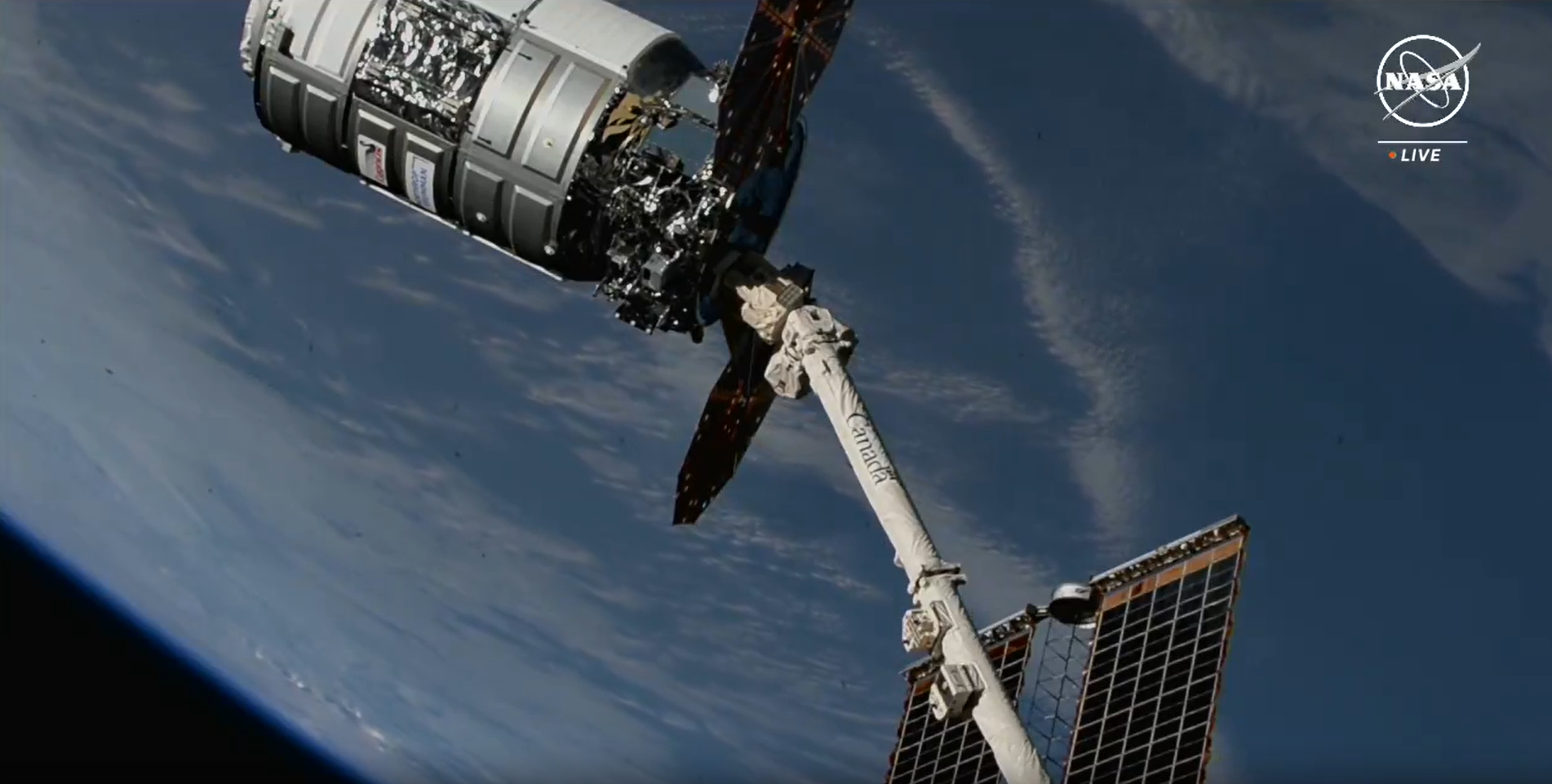
Northrop Grumman’s Cygnus spacecraft installation on the International Space Station is complete at 5:33 a.m. EDT.
The spacecraft carried 8,200 pounds of scientific investigations and cargo to the orbiting laboratory for Northrop Grumman’s 21st commercial resupply mission for NASA.
The mission launched at 11:02 a.m. Aug. 4 on a SpaceX Falcon 9 rocket from Space Launch Complex 40 at Cape Canaveral Space Force Station in Florida.
Cygnus will remain at the space station until January when it departs the orbiting laboratory at which point it will dispose of several thousand pounds of debris through its re-entry into Earth’s atmosphere where it will harmlessly burn up.
Learn more about station activities by following the space station blog, @space_station and @ISS_Research on X, as well as the ISS Facebook and ISS Instagram accounts.
Get weekly updates from NASA Johnson Space Center at: https://roundupreads.jsc.nasa.gov/
Get the latest from NASA delivered every week. Subscribe here: www.nasa.gov/subscribe



